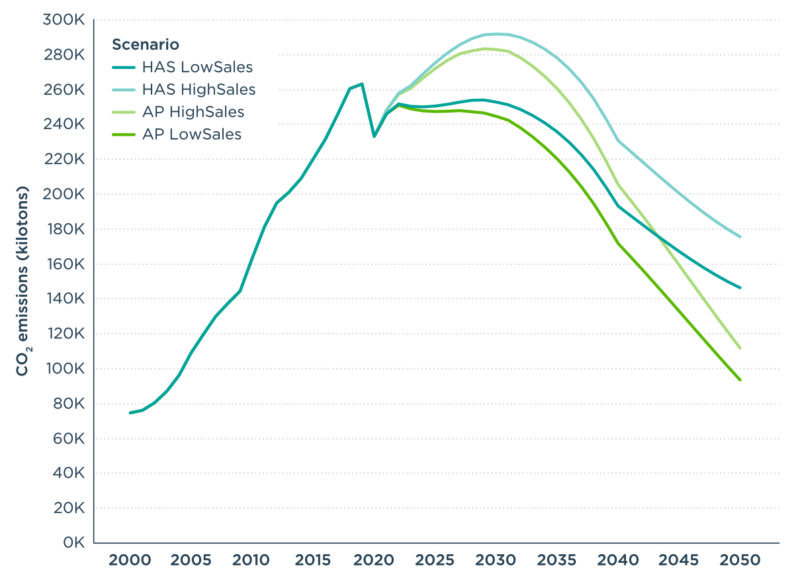Understanding the air quality and health impacts of large-scale vehicle electrification in India
White paper
Decarbonizing India’s road transport: A meta-analysis of road transport emissions models
A strong decarbonization target for the road sector would steer India closer to its climate commitments and decarbonization offers significant co-benefits like cleaner air and related health and well-being gains. Still, data about energy use and emissions that could provide the groundwork for policy supporting such a target is lacking, and few studies have attempted to compare modeling frameworks and projections across different models of India’s transport sector. To help fill the gap, this paper is a meta-analysis of eight of India’s key road transport energy and emissions models. It compares key assumptions, energy use, and CO2 emissions by vehicle and fuel type; assesses the impact of the COVID-19 pandemic; and considers how much emissions reduction could be achieved from the road transport sector by 2050 through aggressive policy efforts.
Despite differences, in a business-as-usual (BAU) future scenario without additional policy interventions, the models generally expect a 3–4 times rise in energy consumption and CO2 emissions between 2020 and 2050. However, interventions like fuel efficiency improvements in combustion engine vehicles, vehicle electrification, increased use of alternative fuels, and restraining travel demand could limit or even reverse the growth trend CO2 emissions from the transport sector. In an Aggressive Policy scenario, these could help abate 45%–50% of cumulative CO2 emissions between 2021 and 2050 (see figure).

Figure. CO2 emissions trajectory under alternate scenarios. Note: HAS = High Ambition Scenario; AP = Aggressive Policy scenario.
Given this, the authors suggest that India set a target of lowering emissions from road transport that is at least 25%–50% below the 2020 level by 2050. Additionally, India should prioritize vehicle electrification, electricity grid decarbonization, and stringent fuel efficiency standards, as results from all models and post-COVID-19 analysis demonstrated the effectiveness of these strategies in reducing petroleum reliance and CO2 emissions.
